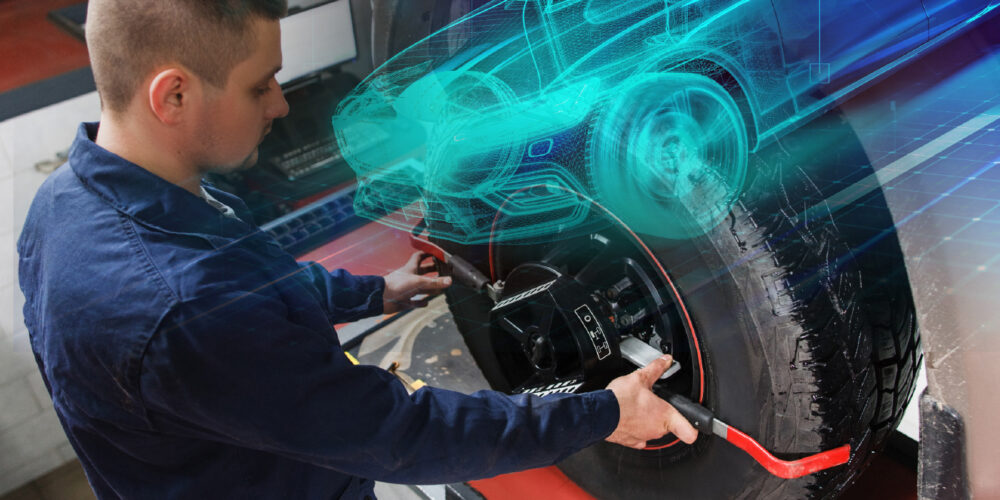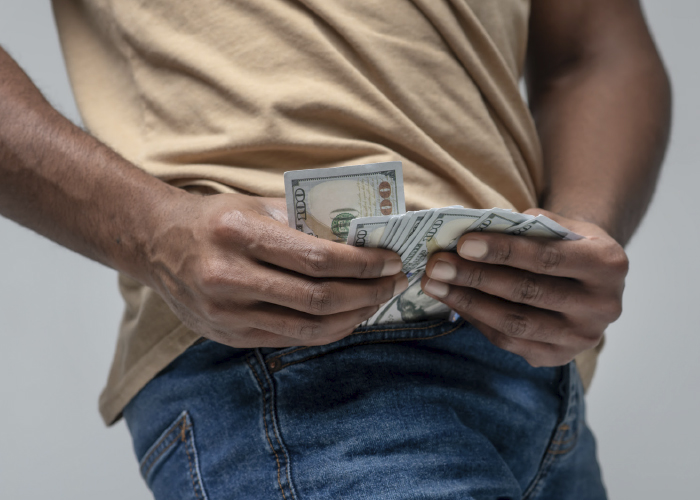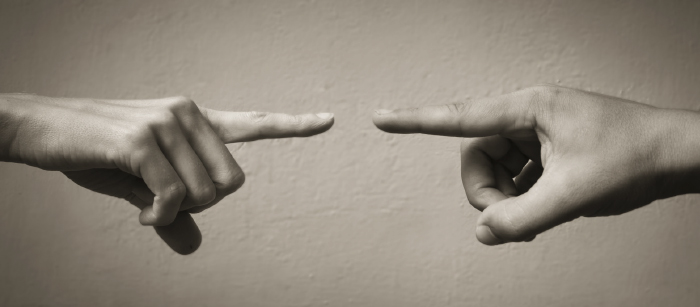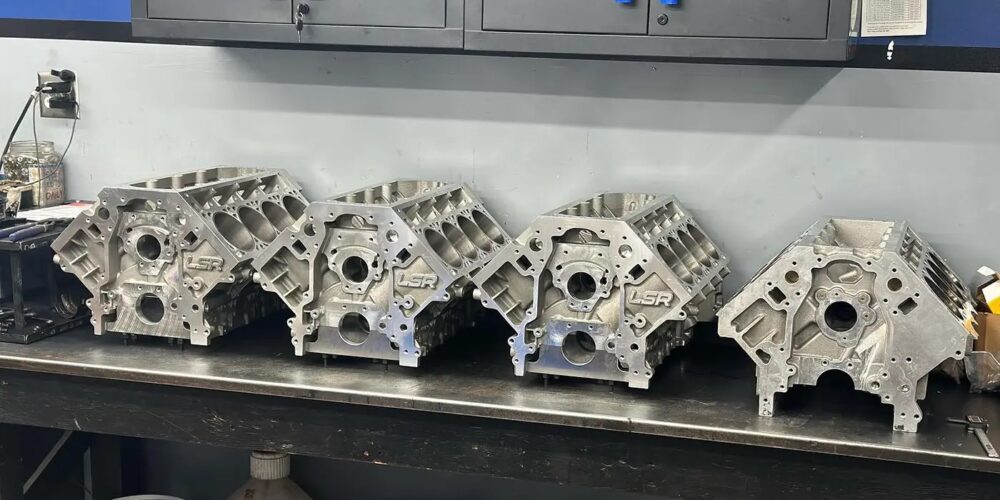Are You Aligned with the Repairs?
New vehicle ADAS and autonomous features all rely on the alignment being exactly as it should by OEM specifications for the driver-assist features to perform correctly.
ehicle alignment has always been a critical piece to the repair and safe operation of any vehicle. In years gone by, we all experienced a customer who would return after repairs were completed with concerns about the vehicle pulling or not staying in the center of the road. Although it happened, it was not all that common because any issues that would affect the alignment were usually found during the repairs.
Today’s vehicles shine a whole new light on how important a vehicle’s alignment is. The new advanced driver-assistance systems (ADAS) and autonomous features on vehicles all rely on that alignment being exactly as it should by original equipment manufacturer (OEM) specifications for the driver-assist features to perform correctly. It is not just about going straight down the road anymore; now, the vehicle’s attitude or alignment to the roadway is also a factor.
Is an Alignment Needed?
This brings to light what to do if the repairs do not warrant an alignment. Think about this scenario: A car is traveling across a parking lot at a low rate of speed. A collision occurs with a pickup truck that causes light damage to the front bumper cover and grille. In that bumper cover behind the grille is the radar for the adaptive cruise control. The bracket that holds the radar is bent, requiring replacement.
Let’s assume all other aspects of the bumper cover are repairable, according to OEM parameters. Following all of the OEM repair procedures, it’s noted that a calibration of the radar is required due to the bracket being replaced – which required the radar to be disconnected, removed and installed (R&I).
The shop reads through the OEM prerequisites to do the calibration for the vehicle. These include (depending on the vehicle manufacturer):
- Fill the fuel tank to full;
- Fill all fluid levels;
- Correct air pressure;
- Have the proper tires and wheels for model of vehicle;
- Verify the alignment;
- Verify the steering wheel angle sensor is correct.
There is more I can add, but you get the point that there are required preparations of the vehicle prior to doing a calibration. Also, to do the static calibration, there are environmental requirements, such as level floor or – for dynamic calibrations – weather conditions.
During the calibration, a drive cycle is performed to verify that all systems are operational and it’s found that the vehicle is out of alignment and the calibration fails. The alignment issue is not the result of the damage from the collision that was repaired.
To complete the calibration required for the repairs and procedures that were performed, an alignment must be done. Who’s responsible for the cost of that alignment? It’s a question that’s coming up in many shops across the country. This is not a bent or broken part that’s unrelated prior damage that’s easily pointed out to a vehicle owner; this is a simple condition of the fact that vehicles can be out of alignment just from daily commutes every day.
Another question pops up from the prerequisites: Who pays to fill the tank with gas? Interestingly enough, I’ve asked many shops and insurance companies this question and gotten a lot of different responses. Some said the alignment may or may not be covered, but it was interesting that almost all said “no” to the tank of gas.
Covering the Cost
Let’s look at another scenario: An owner takes a vehicle to a technician because the vehicle is wearing the tires unevenly. It’s found that the vehicle needs an alignment. The parts and labor are the responsibility of the vehicle owner, as this is a general maintenance issue. It’s also found that the vehicle will need to be calibrated, since the alignment changed the vehicle’s attitude to the roadway. Now, the calibration must be added to the repair. The cost of doing the alignment has now increased tremendously for owners of vehicles with ADAS.
We know that the vehicle maintenance of any motor vehicle is a cost the vehicle owner must pay, as no insurance claim is involved. However, we’ve all learned over the years that the lines get muddled when a third party is covering the cost. When a third party is involved, the key phrase “repair to pre-loss condition” is all a party is required to pay. Unrelated prior damage or even maintenance issues on vehicles that have an effect either on the repair itself or the safety of the vehicle have always been a problem in the repair industry. Nobody wants to put a vehicle that is unsafe or dangerous back on the roadway.
High deductibles and procedures not covered by insurance is money many people are having difficulty with. I know this varies from city to city and from different companies or third parties who are paying for the vehicle repairs, but whether it be a bad part, an adjustment to toe or a steering wheel angle sensor procedure, the need for the alignment to be within specifications is more critical than in the past. We, as an industry, need to be prepared to have more conversations about customers paying for alignments and calibrations and their prerequisites. Many shops are adding signage or verbiage to make consumers aware that fuel charges, that the owner will be responsible for, may be added to the costs.
Releasing a vehicle with the safety features compromised or disabled is not an option a shop should pursue. Not following all the guidelines necessary for a proper calibration will bring the shop a whole new level of scrutiny that it will not want if the unfortunate event of a crash occurs.
Let’s say the alignment was not done or verified to be correct and the customer comes back with a drivability complaint. Who is responsible for the costs to complete the alignment now? Remember hearing, “Well, it was not like that before you fixed my car.”
A warranty is never good for any shop, as it costs the shop money to have an alignment done – whether it is in-house or subletted out – and upsets workflow. Add to that the fact that the customer is now not as happy as he or she should be with the vehicle repairs and is spending time getting it corrected. This can have a demoralizing effect on shop management and your team. No technicians want to do repairs or warranties for free, even if it is to make the customer happy.
The Blame Game
Another growing trend is the vehicle’s owner’s manual states that the driver has ultimate responsibility in the operation of the motor vehicle. In today’s new society of “nobody is responsible for anything that happens,” if a vehicle were to be involved in a crash, I can see people wanting to blame the last person who repaired the vehicle’s safety features: “My car did not do what it was supposed to do.” Doing a calibration in the parking lot or not verifying the alignment can make a jury overrule the owner’s manual or side with basic common sense. Even if nobody, such as the third party or customers themselves, will step up to the plate and pay, can you afford to be uncertain whether the vehicle is compromised when it leaves your shop?
Summary
The alignment issue has been a problem for a while now in many aspects of vehicle repair. To verify an alignment, you’re basically required to actually do the alignment.
The good news is new tools are being developed that are capable of doing quick checks on a vehicle’s alignment. This is valuable to all shops doing body work, mechanical or auto glass. Instead of doing an alignment or setting up the vehicle on an alignment rack, these tools can be used right on the level floor of the shop, saving setup time and labor. This will become a big item for the auto glass industry, which currently does not even address the requirements for verifying alignment; the windshield is replaced and possibly calibrated, then out the door it goes. AUTEL, Hunter and Bosch offer systems that do quick checks on alignments for body shops and auto glass replacement companies.
Educating vehicle owners and the public on the processes and procedures to repair vehicles is a must today. Spending time explaining and informing every customer of what it takes today to repair a vehicle is not the same as yesterday … and these conversations may help to ease into who pays for what in the new world of automotive repair.

















